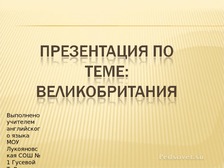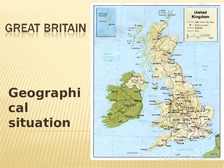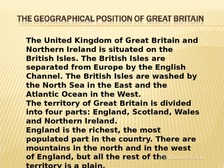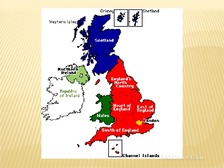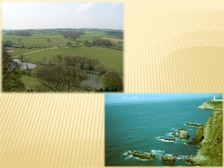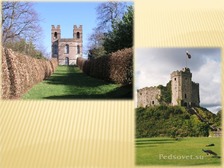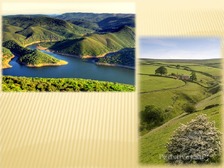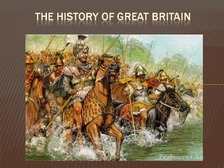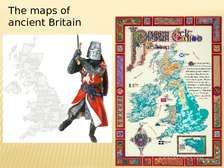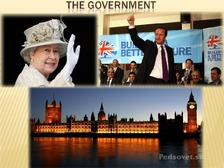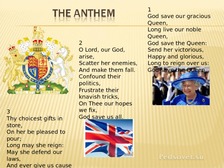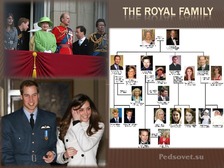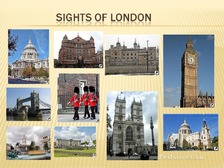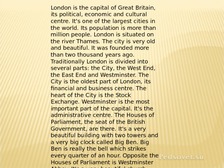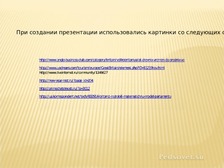Конспект урока по английскому языку для 8 класса "Великобритания"
Урок - путешествие по теме Great Britain в 8 классе.
Гусева Татьяна Викторовна МОУ Лукояновская СОШ №1
Цели урока: активизировать лексику по теме, учить находить необходимую информацию в прослушанном тексте. Организовать контроль языковых и речевых навыков по теме, способствовать расширению общего и страноведческого кругозора учащихся, углубить знания учащихся о Великобритании . Развивать мышление, слуховой контроль, зрительную память и воображение, воспитывать культуру речи, способствовать развитию социокультурной компетенции.
Оборудование урока: карта Великобритании, раздаточный материал для учащихся, мультимедиа.
Ход урока.
I .Оргмомент. Сообщение целей урока.
T. Today we are going to make an enjoyable trip to a wonderful country, situated on an island. We`ll speak about its position and history, rivers and mountains, it`s beautiful capital. Listen to the lines from the poem of the famous writer and poet R. Kipling about this country.
Our (counry) is a garden
And such gardens are not made
By singing” Oh, how beautiful “
And sitting in the shade.
T.- Can you guess the name of the country?
3. Языковая разминка в форме коммуникативной ситуации.
T.-Ask your questions and guess the name of the country.
P1. Are there any rivers( mountains, lakes ets.)?
P2. Is this country large (small)?
P3. Is it hot in summer there?
P4. Do people have the President (the Queen) there?
P.5 Is there a good football team in the country? Ets.
T. Yes, this country is England.
II. Основная часть урока. Аудирование текстов заранее подготовленных учащимися и предъявление презентаций.
P1. ( Слайд 1-7)
The United Kingdom of Great Britain and Northern Ireland consists of England, Scotland, Wales and Northern Ireland. All these parts of the country are represented in Parliament in London. England is noted for its "high-tech" and car industries. Scotland is a land of mountains, lakes and romantic castles. Wales is famous for its high mountains and pretty valleys, factories and coal mines, music and myths. Northern Island, with farming land, is beautiful too.
The UK lies on the British Isles. The English Channel and the Strait of Dover separate Britain from the continent. The climate on the British Isles is temperate. The Gulf Stream makes the climate warmer in winter and cooler in summer. There is much humidity in the air of England. Britain is known as a foggy country. Geographically Great Britain is divided into Lowlands, Midlands, and Highlands.
P2. (Слайд 8-10)
The history of the UK dates back to the ancient times. From the sixth to the third centuries BC, the British Isles were invaded by Celtic tribes. They came from central Europe, and settled in southern England. The Celts were pagans. Their priests, known as Druids, had all education in their hands. They administered justice, and made a disobedient layman an outlaw.
In AD 43, the Romans invaded southern Britain. It became a Roman colony called Britannia. The Romans set up their capital in London and built such cities as Bath, Chester and York. The Roman invasion was not peaceful. In AD 60, the Iceni, a tribe led by Queen Boadicea, destroyed three cities, including London. In AD 122, Emperor Hadrian built a long wall to defend the border between England and Scotland. In the fourth century the Roman Empire was collapsing and the Roman legions left Britain.
From about AD 350 the Saxons, Jutes and Angles began invading south-east England. The native people could not stop the new enemy. The Celts fled north and west taking their ancient arts and languages with them. Celtic languages have disappeared from most of Europe, but are still spoken in parts of Wales, Ireland and Scotland. The Anglo-Saxons were converted to Christianity by Saint Augustine of Rome in AD 597. As Christianity spread, churches and monasteries were built in England.
About AD 790, the Vikings started to invade England. The north and east of England were settled by the Danes. The Vikings were excellent traders and navigators. They traded in silk and furs as far as Russia. In 1016, England became part of the Scandinavian empire under king Cnut. In 1066 England was conquered by the Normans. William Duke of Normandy, known as William the Conqueror, won the battle of Hastings and became King of England. William I established a strong, centralised country under military rule. The Normans built castles all over England to control England better. Norman power was absolute, and the language of the new rulers, Norman French, had a lasting effect on English. Since 1066, England has never been invaded.
P3 (слайд11-13).
For many centuries this country was known simply as England. It had a strong army and navy. It waged numerous colonial wars.
Great Britain is a constitutional monarchy. The Queen is the head of State, but her power is limited by Parliament. The branches of government are: the legislative, the executive and the judiciary. The legislature is the supreme authority. It comprises two chambers - the House of Lords and the House of Commons - together with the Queen in her constitutional role. The executive consists of the central Government - that is the Prime Minister, Cabinet, and other ministers. The judiciary determines common law and interprets statutes and is independent of both the legislature and the executive.
The Government derives its authority from the elected House of Commons. The Government is formed by the political party in power. The second largest party becomes Her Majesty's Loyal Opposition with its own leader and 'Shadow Cabinet'. In Great Britain there is no written constitution, only customs, traditions and precedents.
Р4( слайд 14-15)
London is the capital of the UK. It was founded by the Romans in the 1st century AD. In the 11-th century it became the capital of England. In 1215 its citizens won the right to elect their Lord Mayor. The town experienced tremendous growth in trade and population during the late 16th and early 17th centuries. After the Great Fire of 1666 which destroyed three-quarters of London, the town began its extensive building. London became the main centre not only of the country but of the growing British Empire. During the 19-th century London expanded into the suburbs. As a result of it new forms of transport were developed, including the underground railway system. During World War II London was heavily bombed. The reconstruction that followed was of mixed quality. Replacement of industrial enterprises and docks made London a centre of international trade, finance and tourism.
Today Greater London consists of 33 separate boroughs, including the City, the West End, and the East End. The City is the financial centre of the UK. The Bank of England, the Royal Exchange, and the Stock Exchange are located here.
5) Р5
The West End is noted for its historical places and parks. These are Westminster Abbey and Westminster Cathedral, Houses of Parliament, Buckingham Palace, the principal government offices, New Scotland Yard, the Tate Gallery, and the National Gallery. The most celebrated parks are Kensington Gardens with the Victorian Gothic Albert Memorial; Hyde Park, with its famous Speakers' Corner; and Regent's Park, home of the Zoological Gardens and Regent's Canal. The West End is the area of wealth and goods of high quality.
London's East End is historically associated with the Cockney dialect. It was an infamous slum during the 19th century. The port of London until recently was in the East End. The area of docks played an important part in the country's commerce.
London's major cultural institutions also include the British Museum, which houses collections of antiquities, prints, and manuscripts and the national library; the Victoria and Albert Museum of decorative arts; and the music and arts complex located on the South Bank of the Thames.
Westminster is now the political centre of London, but originally it was a sacred place. King Edward the Confessor built a great abbey church here. It was consecrated in 1065. In 1245 Henry III replaced it with the present abbey church in the pointed Gothic style of the period. Since William the Conqueror, every British sovereign has been crowned in the abbey. Many kings and queens are buried here. There are memorials to eminent men and women. But the most popular ones are those to writers, actors and musicians in Poets' Corner. The grave of the "Unknown Warrior", whose remains were brought from Flanders in 1920, is in the centre of the west nave.
Alongside the Abbey Edward the Confessor ordered to construct a palace. The Palace of Westminster was the royal residence and also the country's main court of law. Parliament met here since the 16-th century until the 19-th century. The present Houses of Parliament, the seat of the legislative body of the United Kingdom of Great Britain and Northern Ireland, were built after the old palace burnt down in 1834. On the corner next to Westminster Bridge stands St. Stephen's Tower, which houses the famous tower clock. A light at the top of the tower at night indicates that parliament is sitting.
Saint Paul's Cathedral was designed in a classical Baroque style by Sir Christopher Wren. It was constructed between 1675 and 1710. Many famous persons are buried in the Cathedral.
Trafalgar Square was named for Lord Nelson's naval victory in the Battle of Trafalgar. In the centre of the square is Nelson's Column that includes his high statue. At the corners of the column are four sculptured lions. Trafalgar Square is the site of the National Gallery. Traditionally political meetings are held here. Each December a large Christmas tree sent from Norway is erected in Trafalgar Square.
2.It`s high time to answer the questions about the United Kingdom . Choose the correct answer.
1. The official name of Great Britain is a) The United Kingdom of Great Britain b) The United Kingdom of Great Britain and Northern Ireland c) Great Britain
2. The flag of the UK is known as a) Union Jack b) the Jack Union c) The flag of crosses
3. In everyday speech “ Great Britain” is used to mean a) England b) England and Wales b) The United Kingdom.
4. The longest river in the British Isles is a) The Thames b) the Spay c) the Severn
5. Westminster Abbey was a) a church b) a tower c) a monastery- the West Minster.
6. Great Britain is a) a parliamentary monarchy b) a constitutional monarchy c) a republic
3. Выполнение тестового задания.
T. Fill in the blanks with the missing words and answer the question : “ What is the difference between The United Kingdom and Great Britain?”
The United Kingdom is made up of England, Wales, Scotland and -------. It`s full name is the United Kingdom of Great Britain and Nothern Ireland. Great Britain includes only England, Scotland and ------. It is the largest -------- of the British Isles. Nothern Ireland and the ------ Republic form the second largest island.
The Isle of Man and the Channel Islands are not parts of the United -------. They have their own governments. The British -------- is, however, responsible for their defence and international relations.
The term “Britain” is used informally to mean ------of Great Britain and Nothern Ireland.
4.Грамматическое задание.
T.- Name the outstanding features of Great Britain filling the blanks with the superlative form of the adjectives.
1)Ben Nevis (1,343) is the (high) mountain in Britain.
2) The (wet) place in Britain is the Lake District. It has about 440 cm of rain a year.
3) Penzance in Cornwell is the (warm) place in Britain. Its average temperature is 11.5 C.
4) The( long) river in Britain is the Severn(354 km).
5) The( famous )poet, who wrote poems in Scottish dialect, is Robert Berns.(1759-1796).
6)The (old) university in Britain is Oxford.It was founded in 1167.
7)Hampden Park in Glasgow is ( large) football stadium in Britain. It can hold 64.110 people.
III1. Заключительный этап урока, подведение итогов.
2.Домашнее задание : What would you tell your friend about Great Britain? Make up a story and write it down.
На странице приведен фрагмент.
|
Автор: гусева татьяна викторовна
→ tangus |
Спасибо за Вашу оценку. Если хотите, чтобы Ваше имя
стало известно автору, войдите на сайт как пользователь
и нажмите Спасибо еще раз. Ваше имя появится на этой стрнице.
